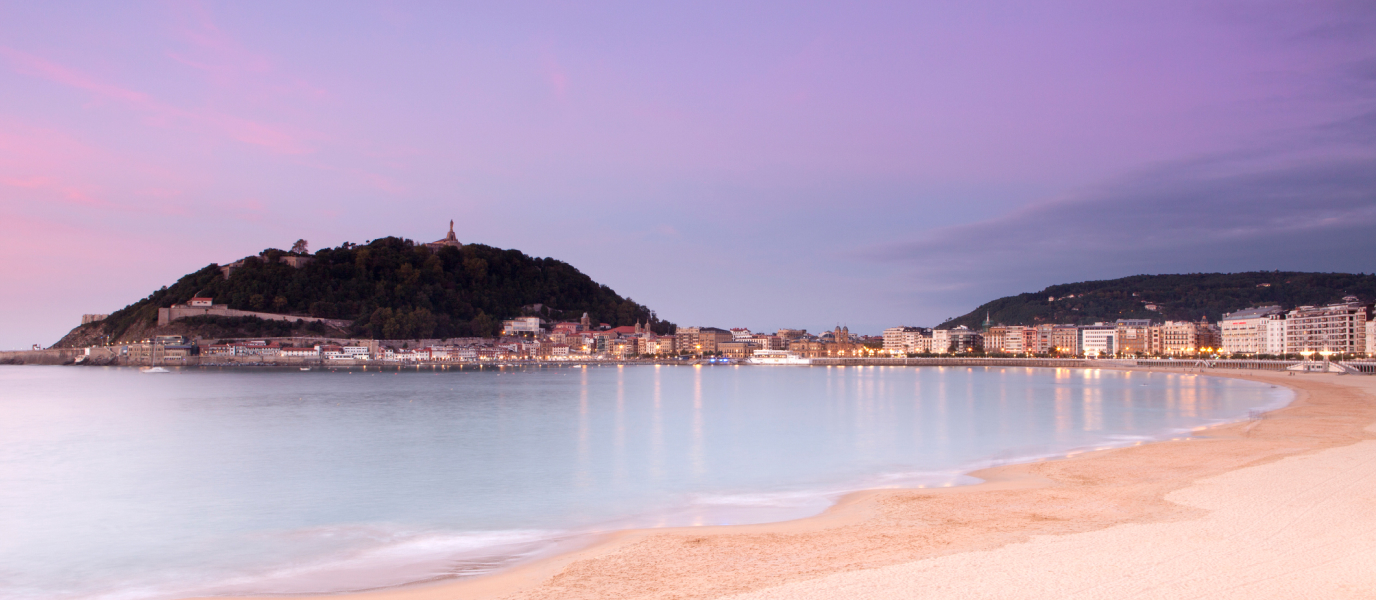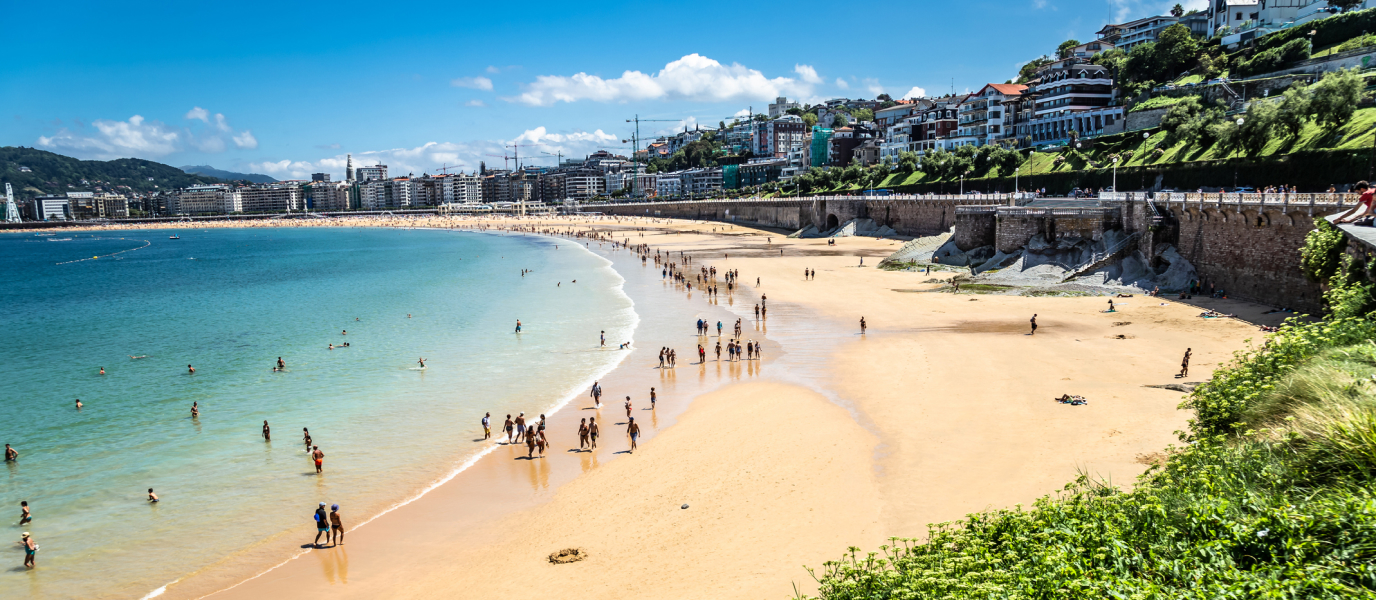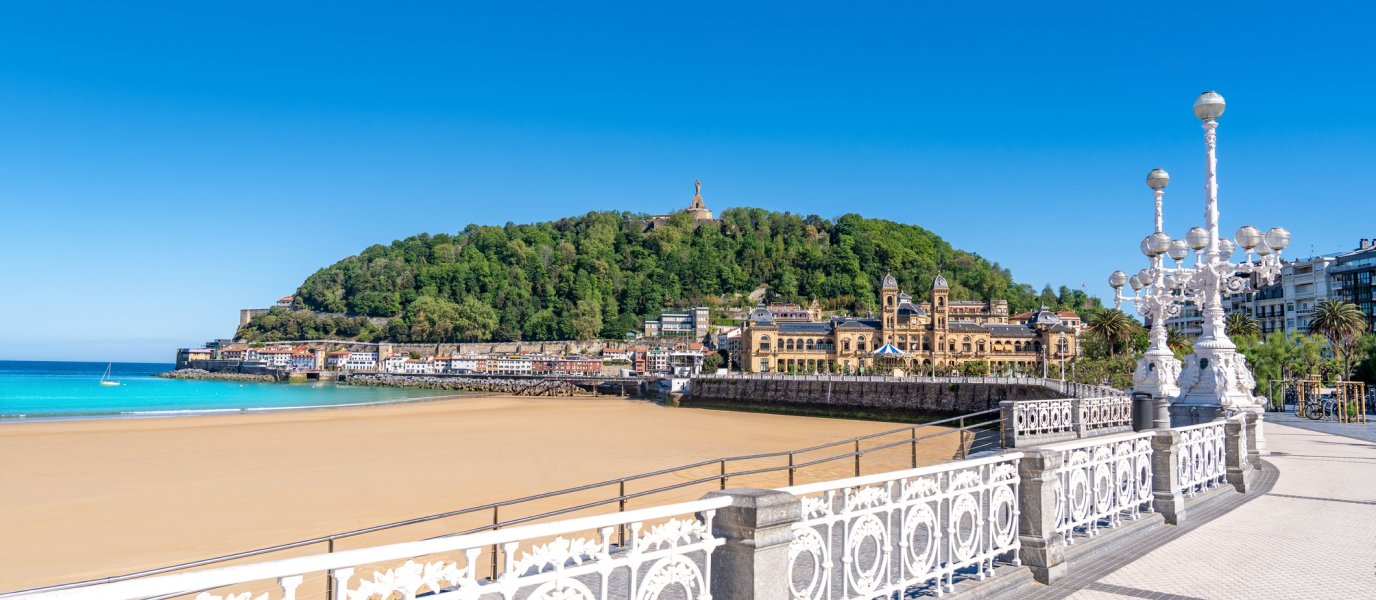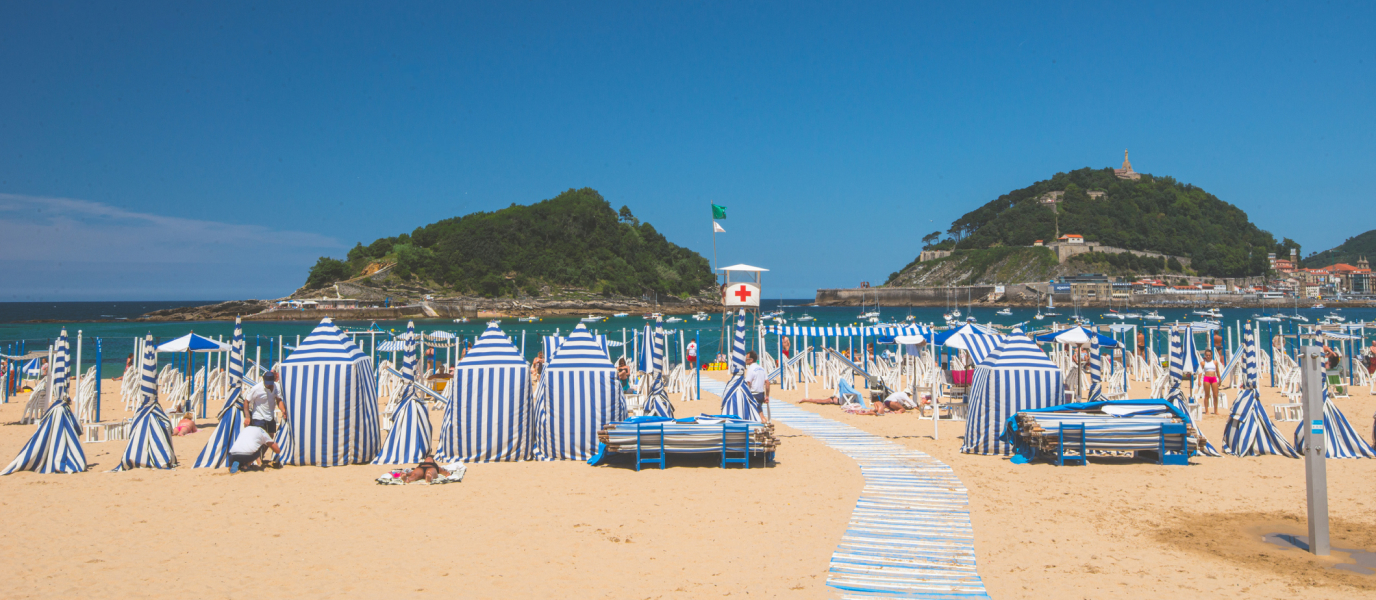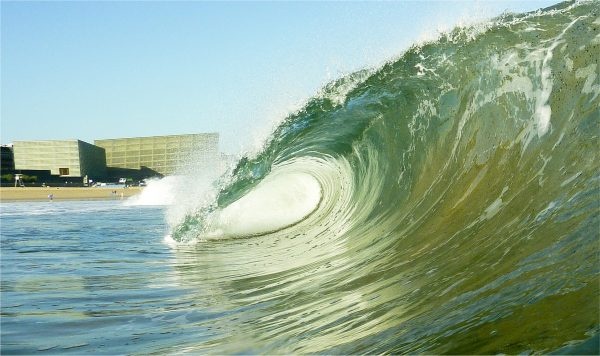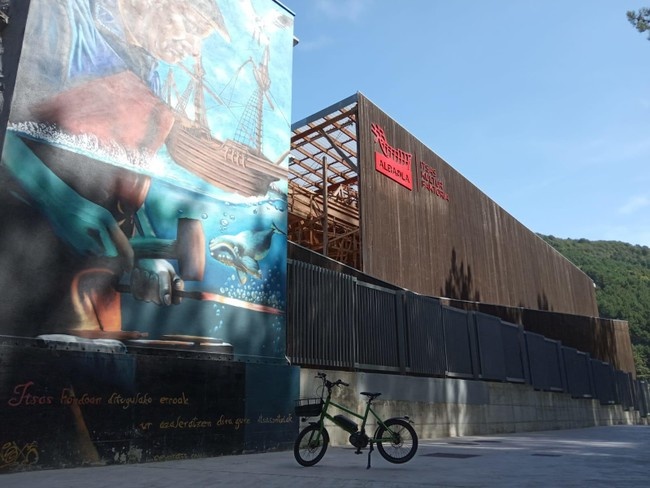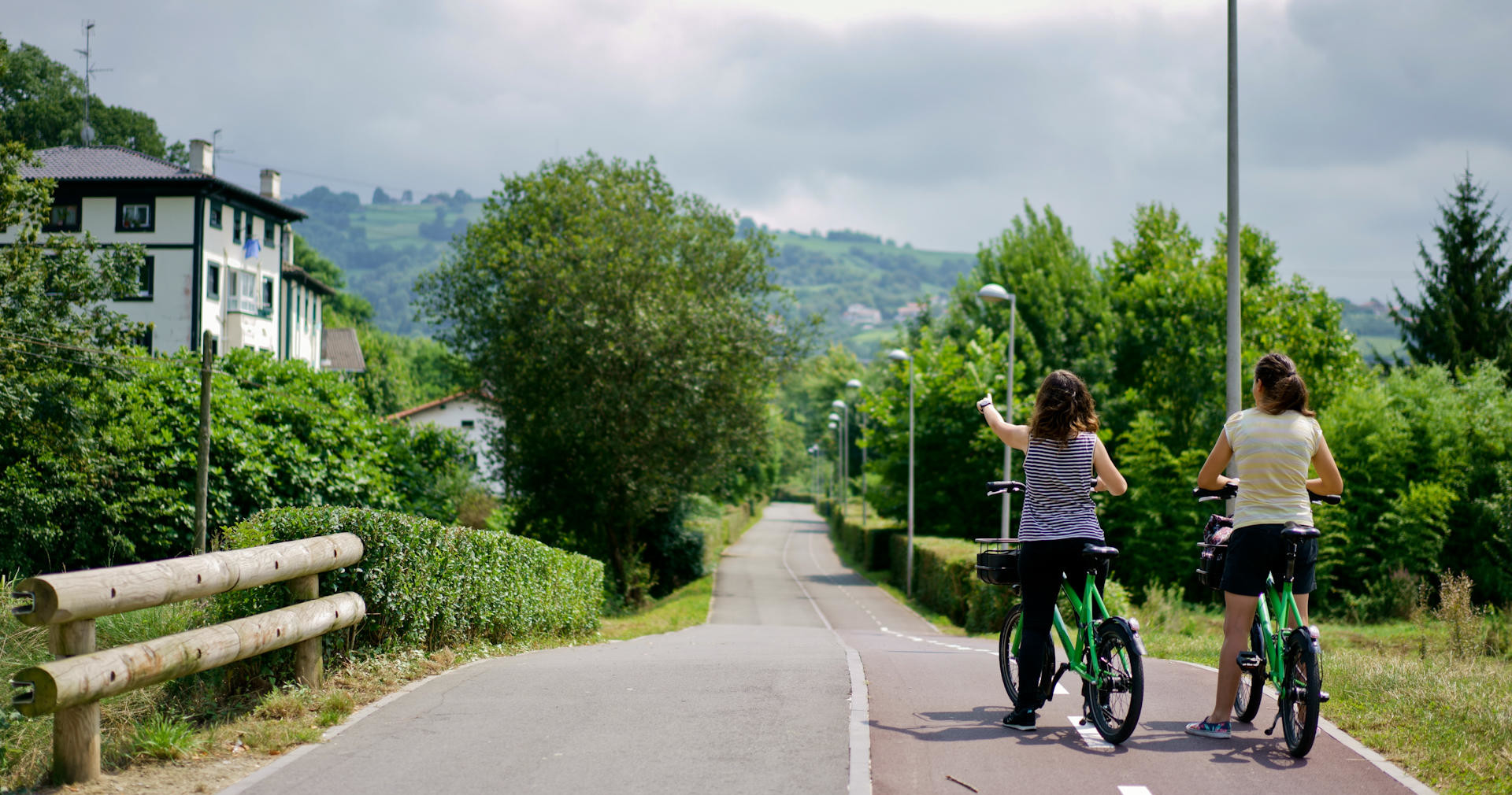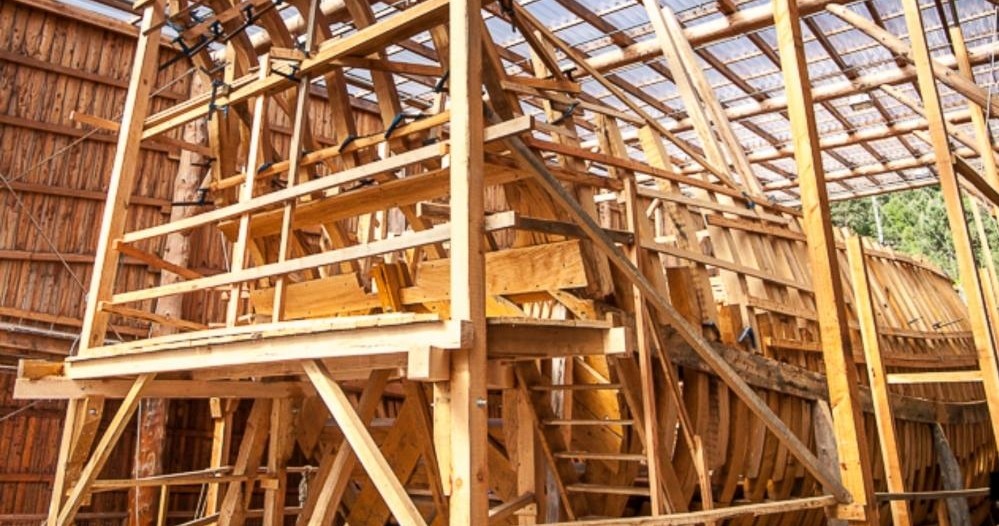Snaking along the urban coastline, San Sebastián’s three beaches are symbolic of the town and a wonderful place to be in all seasons. Want to discover more? Read on as we take you on a step-by-step journey along the beaches of San Sebastián.
These picture-postcard settings have brought some of the best surf to the town, formed the backdrop to famous films and are synonymous with sea-bathing tradition. People talk of San Sebastián’s three beaches but there is in fact a fourth, tucked away in front of Santa Clara Island. The most famous is of course Playa de la Concha.
Playa de la Concha, San Sebastián’s most famous beach
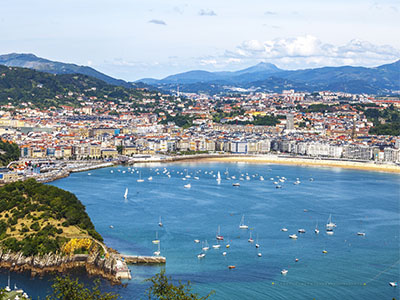
Playa de la Concha is emblematic of Donostia-San Sebastián. Year after year it competes for a top spot in rankings of the best beaches in Spain and Europe.
The setting is spectacular: the bay with Santa Clara Island right the middle, Monte Igueldo and Monte Urgull flanking either side, the promenade behind, the magnificent Town Hall building and the exclusive Real Club Náutico at the eastern extreme, and La Perla thalassotherapy centre overlooking the beach. The eye is irresistibly drawn to this curved stretch of sand and it’s no wonder that it’s now a tourism icon.
There’s a whole array of things to do at La Concha: morning and evening strolls on the sand, water sports, beach football and, when the conditions are right, surfing. Santa Clara Island protects La Concha from the strongest waves so you’ll only catch one here when the sea is really rough.
A walk along Playa de la Concha is an essential part of any visit to San Sebastián. The magnificent promenade adds to the grandeur of the setting, with its more than 100-year-old ornamental railing, old clocks, and the street lamps which have lent their image to the Donostia Award, bestowed annually at the San Sebastián International Film Festival. All this, along with the arcade that runs beneath the promenade, makes the whole place quite unique in Spain.
Playa de la Concha in detail:
- Length: 1,350 metres.
- Width: 40 metres.
- Type of sand: fine and golden.
- Accessible: yes.
Playa de Ondarreta
Playa de la Concha stretches as far as the group of rocks known as the Pico del Loro (Parrot’s Beak), below the Palacio del Miramar, itself once the summer residence of Queen María Cristina. This point marks the start of the other beach in La Concha Bay: Playa de Ondarreta. Those wishing to reach Ondarreta along the promenade (the only way to do so at high tide) will pass through a short tunnel with interesting sea-inspired artwork.
Playa de Ondarreta is shorter than La Concha but is much wider and has a greater usable surface area. It’s always full in summer. Is there anyone who could resist taking a dip in this beautiful setting?
Like its neighbour, Ondarreta’s protected position in the bay makes it a fairly calm beach. Families will love it, and there’s plenty to do including kayaking, volleyball, and two pools for those who prefer to swim in a more enclosed space.
The María Cristina Gardens mark the transition between Ondarreta and the adjoining Antiguo neighbourhood with its traditional shops and plethora of bars and restaurants.
Ondarreta ends at the foot of Monte Igueldo, next to the Real Club de Tenis de San Sebastián. Walk along the promenade at this western extreme of the bay for a close-up look at the Peine del Viento (Comb of the Wind), a famous sculpture by Eduardo Chillida.
Playa de Ondarreta in detail:
- Length: 600 metres.
- Width: 100 metres.
- Type of sand: golden.
- Accessible: yes.
Playa de la Zurriola
What an we say about Playa de la Zurriola? Those looking for shelter won’t find much of it here, for this iconic surfing destination faces the ferocity of the Cantabrian Sea head on.
La Zurriola, or Playa de Gros, has the most youthful vibe of San Sebastián’s beaches. The surf and the Gros neighbourhood located behind the beach set the pace under the gaze of the symbolic Kursaal building – the main venue for the prestigious annual San Sebastián International Film Festival.
The breakwater at the mouth of the Urumea River protects the western end of the beach from the tides and you’ll find a bit more shelter in this zone. Leave the eastern end for the surfers. The waves are noticeably stronger there.
Reconstruction of the breakwater in 1994 modified the beach and the tides to create a larger beach that helped reduced the crowds on La Concha and Ondarreta.
Unlike most urban beaches, nudism is allowed on La Zurriola. Along the beachfront you’ll find several surf shops offering rentals and classes. From the beach, take a hike up Monte Ulía for breathtaking views over the beach, the sea and San Sebastián’s other two urban hills.
Playa de la Zurriola in detail:
- Length: 800 metres.
- Width: 110 metres.
- Type of sand: golden.
- Accessible: yes.
Playa de la isla de Santa Clara
The fourth and lesser-known of San Sebastián’s beaches is nestled against Santa Clara Island which, sitting like a proud sentinel in the bay, has a tiny stretch of sand next to a small jetty. It’s only visible at low tide and is quite charming. To get there, hop aboard a ferry (summer only), hire a kayak, or swim out like a real Basque.
For those who make it, the island has other surprises in store: a small natural swimming pool that will delight children, as well as a bar, picnic tables, and a 19th-century lighthouse offering incredible panoramic views of the bay. You’ll also find toilets and showers.
With its well-equipped and accessible beaches offering a range of activities, San Sebastián really does cater for all tastes.



























































